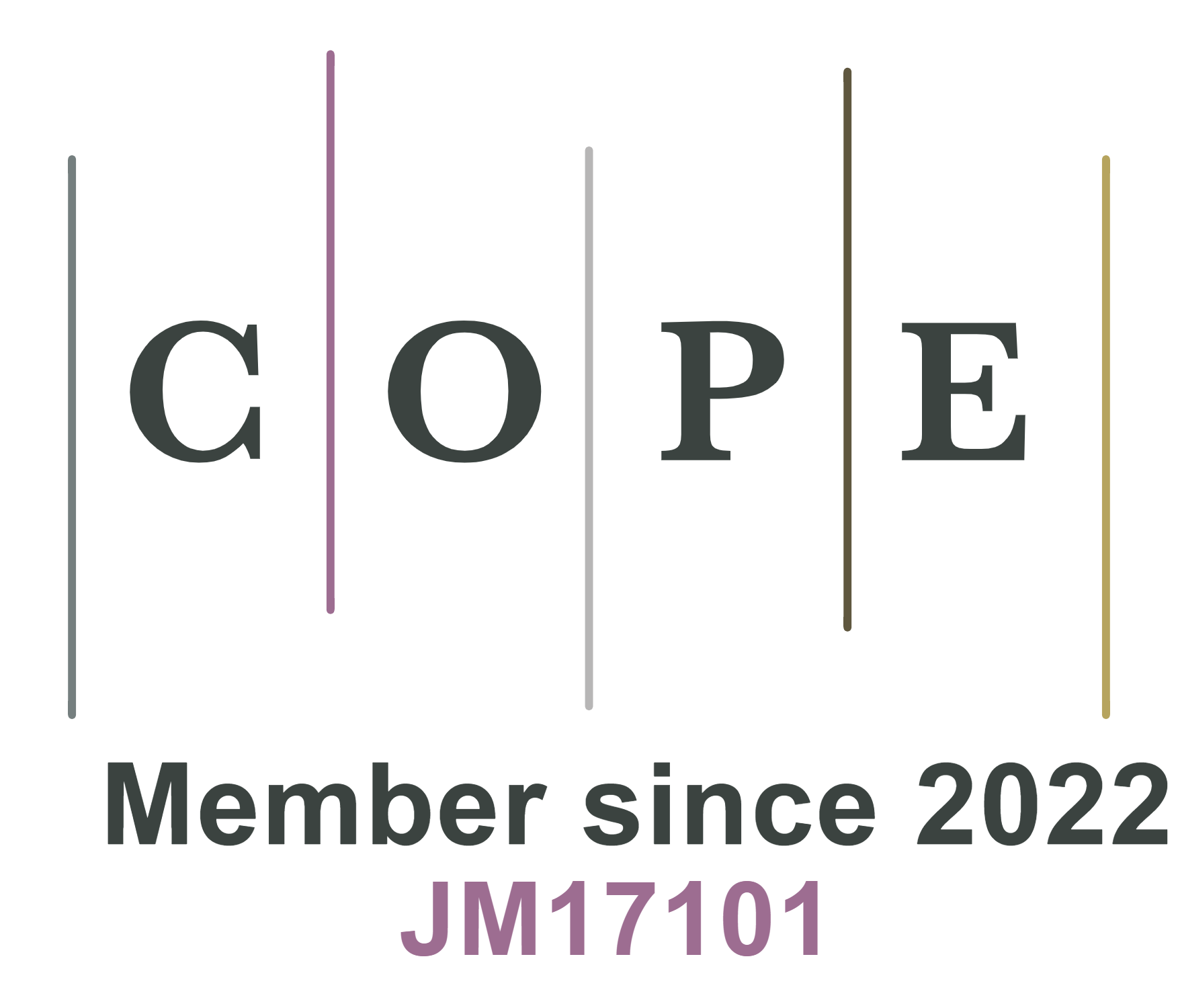REFERENCES
1. Wang K, Yun S, Ke T, et al. Use of bag-filter gas dust in anaerobic digestion of cattle manure for boosting the methane yield and digestate utilization. Bioresour Technol 2022;348:126729.
2. Huang X, Yun S, Zhu J, Du T, Zhang C, Li X. Mesophilic anaerobic co-digestion of aloe peel waste with dairy manure in the batch digester: focusing on mixing ratios and digestate stability. Bioresour Technol 2016;218:62-8.
3. Ke T, Yun S, Wang K, An J, Liu L, Liu J. Enhanced anaerobic co-digestion performance by using surface-annealed titanium spheres at different atmospheres. Bioresour Technol 2022;347:126341.
4. Li B, Yun S, Xing T, Wang K, Ke T, An J. A strategy for understanding the enhanced anaerobic co-digestion via dual-heteroatom doped bio-based carbon and its functional groups. Chem Eng J 2021;425:130473.
5. Xu H, Yun S, Wang C, et al. Improving performance and phosphorus content of anaerobic co-digestion of dairy manure with aloe peel waste using vermiculite. Bioresour Technol 2020;301:122753.
6. Jia B, Yun S, Shi J, et al. Enhanced anaerobic mono- and co-digestion under mesophilic condition: Focusing on the magnetic field and Ti-sphere core-shell structured additives. Bioresour Technol 2020;310:123450.
7. Wu Y, Wang S, Liang D, Li N. Conductive materials in anaerobic digestion: from mechanism to application. Bioresour Technol 2020;298:122403.
8. An J, Yun S, Wang W, et al. Enhanced methane production in anaerobic co-digestion systems with modified black phosphorus. Bioresour Technol 2023;368:128311.
9. Xing T, Yun S, Li B, et al. Coconut-shell-derived bio-based carbon enhanced microbial electrolysis cells for upgrading anaerobic co-digestion of cow manure and aloe peel waste. Bioresour Technol 2021;338:125520.
10. Li X, Yun S, Zhang C, Fang W, Huang X, Du T. Application of nano-scale transition metal carbides as accelerants in anaerobic digestion. Int J Hydrog Energy 2018;43:1926-36.
11. Zhang T, Yun S, Li X, et al. Fabrication of niobium-based oxides/oxynitrides/nitrides and their applications in dye-sensitized solar cells and anaerobic digestion. J Power Sources 2017;340:325-36.
12. Córdova-lizama A, Carrera-figueiras C, Palacios A, Castro-olivera P, Ruiz-espinoza J. Improving hydrogen production from the anaerobic digestion of waste activated sludge: effects of cobalt and iron zero valent nanoparticles. Int J Hydrog Energy 2022;47:30074-84.
13. Abdelsalam E, Samer M, Attia Y, Abdel-hadi M, Hassan H, Badr Y. Influence of zero valent iron nanoparticles and magnetic iron oxide nanoparticles on biogas and methane production from anaerobic digestion of manure. Energy 2017;120:842-53.
14. Zhang W, Zhang L, Li A. Enhanced anaerobic digestion of food waste by trace metal elements supplementation and reduced metals dosage by green chelating agent [S, S]-EDDS via improving metals bioavailability. Water Res 2015;84:266-77.
15. Huang W, Yang F, Huang W, Wang D, Lei Z, Zhang Z. Weak magnetic field significantly enhances methane production from a digester supplemented with zero valent iron. Bioresour Technol 2019;282:202-10.
16. Cubero-Cardoso J, Maluf Braga AF, Trujillo-Reyes Á, et al. Effect of metals on mesophilic anaerobic digestion of strawberry extrudate in batch mode. J Environ Manag 2023;326:116783.
17. Abbas Y, Yun S, Wang Z, Zhang Y, Zhang X, Wang K. Recent advances in bio-based carbon materials for anaerobic digestion: a review. Renew Sustain Energy Reviews 2021;135:110378.
18. Chen S, Rotaru AE, Shrestha PM, et al. Promoting interspecies electron transfer with biochar. Sci Rep 2014;4:5019.
19. Wang G, Li Q, Gao X, Wang XC. Synergetic promotion of syntrophic methane production from anaerobic digestion of complex organic wastes by biochar: performance and associated mechanisms. Bioresour Technol 2018;250:812-20.
20. Wang J, Zhao Z, Zhang Y. Enhancing anaerobic digestion of kitchen wastes with biochar: Link between different properties and critical mechanisms of promoting interspecies electron transfer. Renew Energy 2021;167:791-9.
21. Chen M, Shao L, Lv X, et al. In situ growth of Ni-encapsulated and N-doped carbon nanotubes on N-doped ordered mesoporous carbon for high-efficiency triiodide reduction in dye-sensitized solar cells. Chem Eng J 2020;390:124633.
22. Dai Y, Chan Y, Jiang B, et al. Bifunctional Ag/Fe/N/C catalysts for enhancing oxygen reduction via cathodic biofilm inhibition in microbial fuel cells. ACS Appl Mater Interfaces 2016;8:6992-7002.
23. Lai Y, Wang Q, Wang M, Li J, Fang J, Zhang Z. Facile synthesis of mesoporous Fe-N-C electrocatalyst for high performance alkaline aluminum-air battery. J Electroanal Chem 2017;801:72-6.
24. Lu Z, Liu B, Dai W, Ouyang L, Ye J. Carbon network framework derived iron-nitrogen co-doped carbon nanotubes for enhanced oxygen reduction reaction through metal salt-assisted polymer blowing strategy. Appl Surf Sci 2019;463:767-74.
25. Yun S, Zhang Y, Zhang L, Liu Z, Deng Y. Ni and Fe nanoparticles, alloy and Ni/Fe-Nx coordination co-boost the catalytic activity of the carbon-based catalyst for triiodide reduction and hydrogen evolution reaction. J Colloid Interface Sci 2022;615:501-16.
26. Pei X, Peng X, Jia X, Wong PK. N-doped biochar from sewage sludge for catalytic peroxydisulfate activation toward sulfadiazine: efficiency, mechanism, and stability. J Hazard Mater 2021;419:126446.
27. Abbas Y, Yun S, Mehmood A, et al. Co-digestion of cow manure and food waste for biogas enhancement and nutrients revival in bio-circular economy. Chemosphere 2023;311:137018.
28. Abbas Y, Yun S, Wang K, Ali Shah F, Xing T, Li B. Static-magnetic-field coupled with fly-ash accelerant: a powerful strategy to significantly enhance the mesophilic anaerobic-co-digestion. Bioresour Technol 2021;327:124793.
29. Wang Z, Yun S, Xu H, et al. Mesophilic anaerobic co-digestion of acorn slag waste with dairy manure in a batch digester: focusing on mixing ratios and bio-based carbon accelerants. Bioresour Technol 2019;286:121394.
30. Yun S, Fang W, Du T, et al. Use of bio-based carbon materials for improving biogas yield and digestate stability. Energy 2018;164:898-909.
31. Xu L, Fu B, Sun Y, et al. Degradation of organic pollutants by Fe/N co-doped biochar via peroxymonosulfate activation: synthesis, performance, mechanism and its potential for practical application. Chem Eng J 2020;400:125870.
32. Li X, Jia Y, Zhou M, Su X, Sun J. High-efficiency degradation of organic pollutants with Fe, N co-doped biochar catalysts via persulfate activation. J Hazard Mater 2020;397:122764.
33. Li L, Liu H, Chen Y, et al. Effect of magnet-Fe3O4 composite structure on methane production during anaerobic sludge digestion: establishment of direct interspecies electron transfer. Renew Energy 2022;188:52-60.
34. Li S, Cao Y, Zhao Z, Zhang Y. Regulating secretion of extracellular polymeric substances through dosing magnetite and zerovalent iron nanoparticles to affect anaerobic digestion mode. ACS Sustain Chem Eng 2019;7:9655-62.
35. Wang T, Zhang D, Dai L, Dong B, Dai X. Magnetite triggering enhanced direct interspecies electron transfer: a scavenger for the blockage of electron transfer in anaerobic digestion of high-solids sewage sludge. Environ Sci Technol 2018;52:7160-9.
36. Yang L, Chen J, Park S, Wang H. Recent progress on metal-organic framework derived carbon and their composites as anode materials for potassium-ion batteries. Energy Mater 2023;3:300042.
37. Wang Z, Yun S, Shi J, et al. Critical evidence for direct interspecies electron transfer with tungsten-based accelerants: an experimental and theoretical investigation. Bioresour Technol 2020;311:123519.
38. Zhao J, Bao J, Yang S, et al. Exsolution-dissolution of supported metals on high-entropy Co3MnNiCuZnOx: toward sintering-resistant catalysis. ACS Catal 2021;11:12247-57.
39. Zhang C, Yun S, Li X, Wang Z, Xu H, Du T. Low-cost composited accelerants for anaerobic digestion of dairy manure: focusing on methane yield, digestate utilization and energy evaluation. Bioresour Technol 2018;263:517-24.
40. Liang S, Guo F, Du S, et al. Synthesis of Sargassum char-supported Ni-Fe nanoparticles and its application in tar cracking during biomass pyrolysis. Fuel 2020;275:117923.
41. Xu L, Wu C, Liu P, et al. Peroxymonosulfate activation by nitrogen-doped biochar from sawdust for the efficient degradation of organic pollutants. Chem Eng J 2020;387:124065.
42. Chen Y, Gokhale R, Serov A, Artyushkova K, Atanassov P. Novel highly active and selective Fe-N-C oxygen reduction electrocatalysts derived from in-situ polymerization pyrolysis. Nano Energy 2017;38:201-9.
43. Yang C, Yun S, Shi J, et al. Tailoring the supercapacitive behaviors of Co/Zn-ZIF derived nanoporous carbon via incorporating transition metal species: a hybrid experimental-computational exploration. Chem Eng J 2021;419:129636.
44. Zhang Y, Yun S, Sun M, et al. Implanted metal-nitrogen active sites enhance the electrocatalytic activity of zeolitic imidazolate zinc framework-derived porous carbon for the hydrogen evolution reaction in acidic and alkaline media. J Colloid Interface Sci 2021;604:441-57.
45. Chen X, Qin R, Li Z, Shan S, Liu Y, Yang C. One-pot synthesis of Fe/Cu/N-doped carbon materials derived from shale oil for efficient oxygen reduction reaction. Mol Catal 2021;500:111330.
46. Sun M, Yun S, Shi J, et al. Designing and understanding the outstanding tri-iodide reduction of N-coordinated magnetic metal modified defect-rich carbon dodecahedrons in photovoltaics. Small 2021;17:e2102300.
47. Cai H, Fu L, Pan H, Yan Z, Chen T, Zhao T. Pore engineering of ultramicroporous carbon from an N-doped polymer for CO2 adsorption and conversion. Mol Catal 2023;550:113557.
48. Cheng H, Ji R, Bian Y, Jiang X, Song Y. From macroalgae to porous graphitized nitrogen-doped biochars - using aquatic biota to treat polycyclic aromatic hydrocarbons-contaminated water. Bioresour Technol 2020;303:122947.
49. Choi CH, Park SH, Woo SI. N-doped carbon prepared by pyrolysis of dicyandiamide with various MeCl2·xH2O (Me = Co, Fe, and Ni) composites: effect of type and amount of metal seed on oxygen reduction reactions. Appl Catal B Environ 2012;119-20:123-31.
50. Luo B, Zhou L, Tian Z, He Y, Shu R. Hydrogenolysis of cornstalk lignin in supercritical ethanol over N-doped micro-mesoporous biochar supported Ru catalyst. Fuel Process Technol 2022;231:107218.
51. Wang X, Yun S, Zhang Y, et al. Boosting catalytic activity of niobium/tantalum-nitrogen active-sites for triiodide reduction in photovoltaics. J Colloid Interface Sci 2021;603:651-65.
52. Huang Z, Zhou H, Yang W, Fu C, Chen L, Kuang Y. Three-dimensional hierarchical porous nitrogen and sulfur-codoped graphene nanosheets for oxygen reduction in both alkaline and acidic media. ChemCatChem 2017;9:987-96.
53. Chan Y, Dai Y, Li R, Zou J, Tian G, Fu H. Low-temperature synthesized nitrogen-doped iron/iron carbide/partly-graphitized carbon as stable cathode catalysts for enhancing bioelectricity generation. Carbon 2015;89:8-19.
54. Masa J, Sinev I, Mistry H, et al. Ultrathin high surface area nickel boride (NixB) nanosheets as highly efficient electrocatalyst for oxygen evolution. Adv Energy Mater 2017;7:1700381.
55. Chen B, Wang D, Zhang B, et al. Engineering the active sites of graphene catalyst: from CO2 activation to activate Li-CO2 batteries. ACS Nano 2021;15:9841-50.
56. Xiong Y, Li H, Liu C, et al. Single-atom Fe catalysts for fenton-like reactions: roles of different N species. Adv Mater 2022;34:e2110653.
57. Zhou Y, Li Y, Zhang L, et al. Fe-leaching induced surface reconstruction of Ni-Fe alloy on N-doped carbon to boost oxygen evolution reaction. Chem Eng J 2020;394:124977.
58. Deng Y, Yun S, Dang J, et al. A multi-dimensional hierarchical strategy building melamine sponge-derived tetrapod carbon supported cobalt-nickel tellurides 0D/3D nanohybrids for boosting hydrogen evolution and triiodide reduction reaction. J Colloid Interface Sci 2022;624:650-69.
59. Dang J, Yun S, Zhang Y, et al. Constructing double-shell structured N-C-in-Co/N-C electrocatalysts with nanorod- and rhombic dodecahedron-shaped hollow morphologies to boost electrocatalytic activity for hydrogen evolution and triiodide reduction reaction. Chem Eng J 2022;449:137854.
60. Shen Y, Linville JL, Urgun-demirtas M, Schoene RP, Snyder SW. Producing pipeline-quality biomethane via anaerobic digestion of sludge amended with corn stover biochar with in-situ CO2 removal. Appl Energy 2015;158:300-9.
61. Han F, Yun S, Zhang C, Xu H, Wang Z. Steel slag as accelerant in anaerobic digestion for nonhazardous treatment and digestate fertilizer utilization. Bioresour Technol 2019;282:331-8.
62. Liu L, Yun S, Ke T, Wang K, An J, Liu J. Dual utilization of aloe peel: aloe peel-derived carbon quantum dots enhanced anaerobic co-digestion of aloe peel. Waste Manag 2023;159:163-73.
63. Yun S, Xing T, Wang Y, et al. Mineral residue accelerant-enhanced anaerobic digestion of cow manure: an evaluation system of comprehensive performance. Sci Total Environ 2023;858:159840.
64. Yun S, Xing T, Han F, et al. Enhanced direct interspecies electron transfer with transition metal oxide accelerants in anaerobic digestion. Bioresour Technol 2021;320:124294.
65. Zhang W, Lang Q, Wu S, Li W, Bah H, Dong R. Anaerobic digestion characteristics of pig manures depending on various growth stages and initial substrate concentrations in a scaled pig farm in Southern China. Bioresour Technol 2014;156:63-9.
66. Xie S, Wickham R, Nghiem LD. Synergistic effect from anaerobic co-digestion of sewage sludge and organic wastes. Int Biodeter Biodegr 2017;116:191-7.
67. Kumar A, Singh E, Singh L, Kumar S, Kumar R. Carbon material as a sustainable alternative towards boosting properties of urban soil and foster plant growth. Sci Total Environ 2021;751:141659.
68. Zhang A, Bian R, Pan G, et al. Effects of biochar amendment on soil quality, crop yield and greenhouse gas emission in a Chinese rice paddy: a field study of 2 consecutive rice growing cycles. Field Crops Res 2012;127:153-60.
69. Li Y, Chen Y, Wu J. Enhancement of methane production in anaerobic digestion process: a review. Appl Energy 2019;240:120-37.
70. Lovley DR. Syntrophy goes electric: direct interspecies electron transfer. Ann Rev Microbiol 2017;71:643-64.
71. Yang Y, Zhang Y, Li Z, Zhao Z, Quan X, Zhao Z. Adding granular activated carbon into anaerobic sludge digestion to promote methane production and sludge decomposition. J Clean Prod 2017;149:1101-8.
72. Barua S, Dhar BR. Advances towards understanding and engineering direct interspecies electron transfer in anaerobic digestion. Bioresour Technol 2017;244:698-707.
73. Chen J, Yun S, Shi J, et al. Role of biomass-derived carbon-based composite accelerants in enhanced anaerobic digestion: focusing on biogas yield, fertilizer utilization, and density functional theory calculations. Bioresour Technol 2020;307:123204.
74. Liang M, Liu Y, Zhang J, et al. Understanding the role of metal and N species in M@NC catalysts for electrochemical CO2 reduction reaction. Appl Catal B Environ 2022;306:121115.
75. Wang J, Zhu W, Meng F, Bai G, Zhang Q, Lan X. Integrating dual-metal sites into covalent organic frameworks for enhanced photocatalytic CO2 reduction. ACS Catal 2023;13:4316-29.









